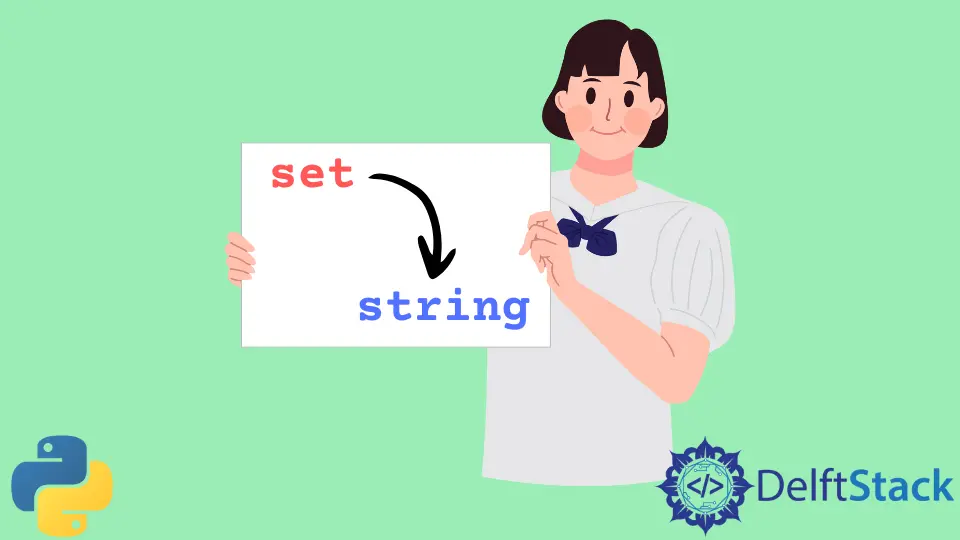在 Python 中将集合转换为字符串
Preet Sanghavi
2023年1月30日
Python
Python String
Python Set

本教程演示了如何使用最佳技术将 Python 集转换为字符串。
我们可以采用两种技术进行所需的转换。
- 使用
map()和join()函数。 - 使用
repr()函数。
让我们从一个样本集开始。
se = set([1, 2, 3])
现在我们有一个集合,我们将把它转换成一个字符串。
在 Python 中使用 map() 和 join() 函数将集合转换为字符串
在这种方法中,我们将集合中的每个元素转换为一个字符串,然后将它们连接起来得到一个字符串,我们将使用 ',' 作为分隔符。我们通过以下方式做到这一点。
str_new = ", ".join(list(map(str, se)))
在上面的代码中,map() 函数获取每个集合元素并使用 list() 函数将它们转换为存储在列表中的字符串。然后 join() 函数将字符串中的各个字符串元素以',' 作为分隔符并返回单个字符串。
我们现在将打印新字符串以及数据类型。
print(str_new)
print(type(str_new))
上面的代码为我们提供了以下输出。
'1, 2, 3'
<class 'str'>
输出显示我们已将集合转换为字符串。
在 Python 中使用 repr() 函数将集合转换为字符串
这种方法将使用 repr() 函数将我们的集合转换为字符串。我们将使用与上述技术相同的样本集。
我们将创建一个新变量来存储 repr() 函数的返回值。
r_str = repr(se)
正如我们在上面看到的,我们需要将输入集传递给 repr() 函数,它会返回字符串。我们将打印新变量及其数据类型以确保我们的转换成功。
print(r_str)
print(type(r_str))
以上结果为以下输出。
{1, 2, 3}
<class 'str'>
如上所示,我们的集合已成功转换为字符串。
因此,我们成功地学习了多种将 Python 集合转换为字符串的技术。
Enjoying our tutorials? Subscribe to DelftStack on YouTube to support us in creating more high-quality video guides. Subscribe
作者: Preet Sanghavi
相关文章 - Python String
- 在 Python 中从字符串中删除逗号
- 如何以 Pythonic 的方式检查字符串是否为空
- 在 Python 中将字符串转换为变量名
- Python 如何去掉字符串中的空格/空白符
- 如何在 Python 中从字符串中提取数字
- Python 如何将字符串转换为时间日期 datetime 格式
